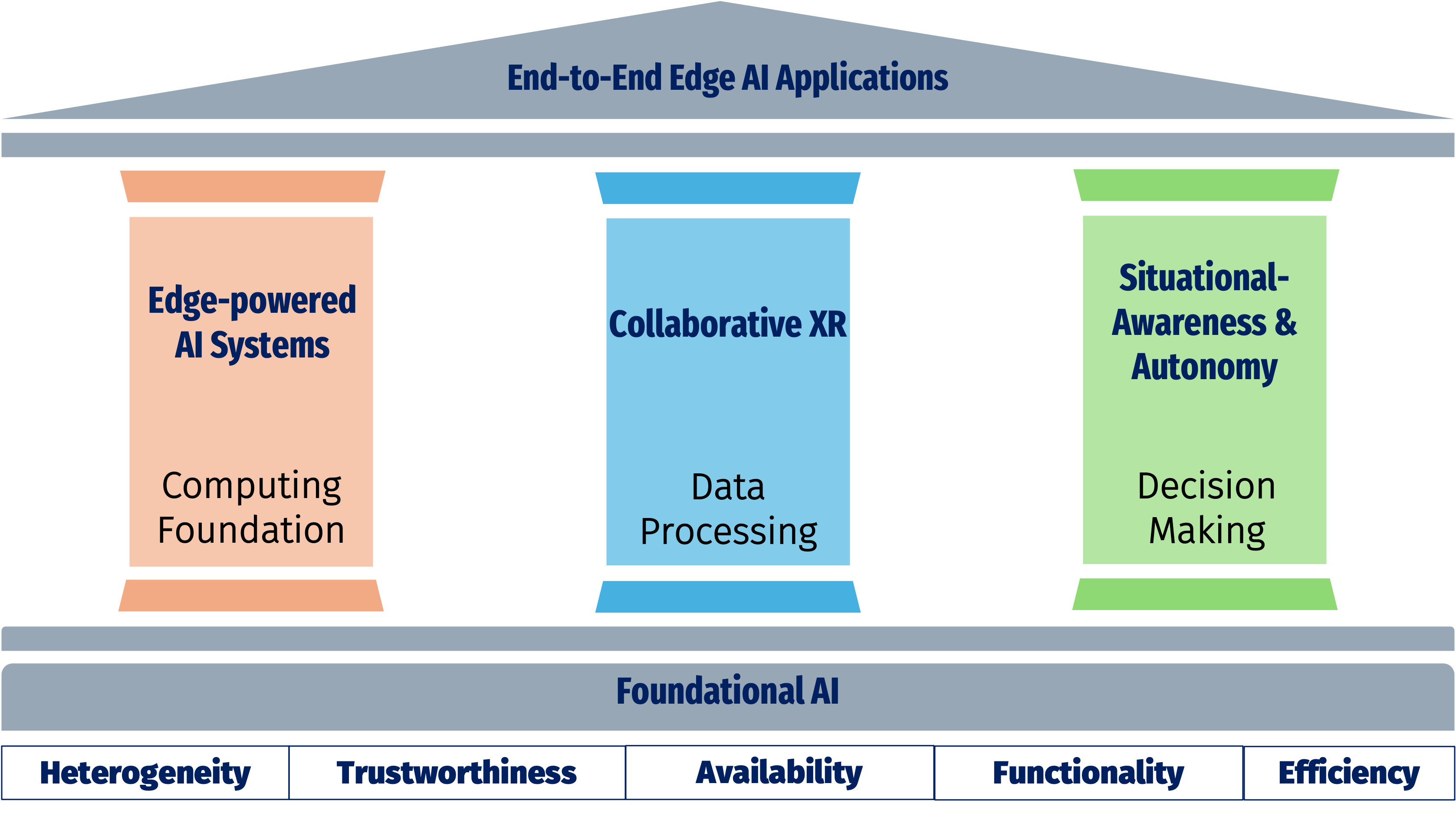
Edge computing represents a transformative approach to data handling, optimizing the processing of vast amounts of data generated by internet-of-things (IoT) and mobile devices. By decentralizing data processing, edge computing conducts analyses closer to the data source, enhancing response times, reducing costs, bolstering security, and increasing energy efficiency. This paradigm shift necessitates robust networks and advanced AI technologies to efficiently scale and maintain system reliability.
Goal:
Addresses the challenges facing mobile networks
Advances the state-of-the-art of AI regarding functionality, efficiency, heterogeneity, and trustworthiness
Enabling a shared intelligent network infrastructure and disrupting the ecosystem and business model
research organization:

Role of Components


